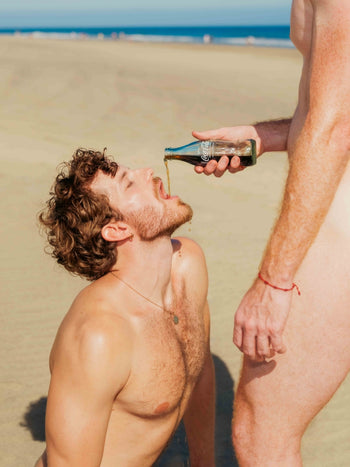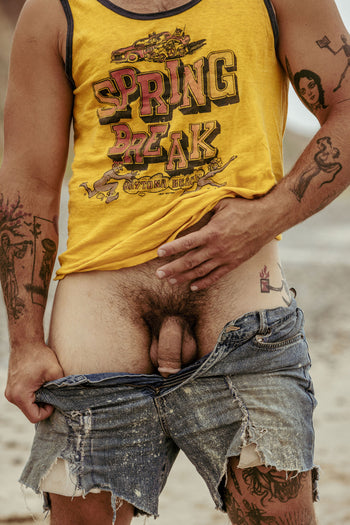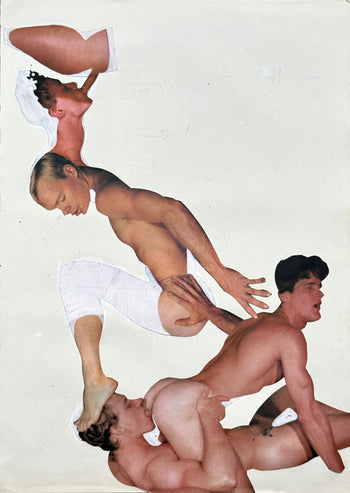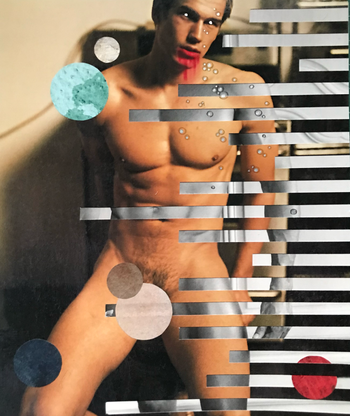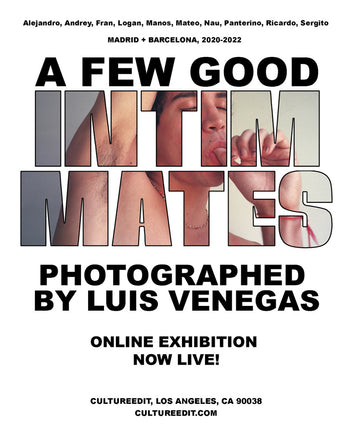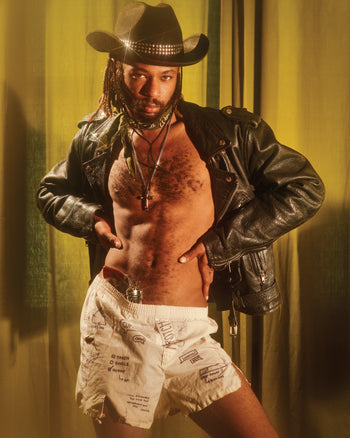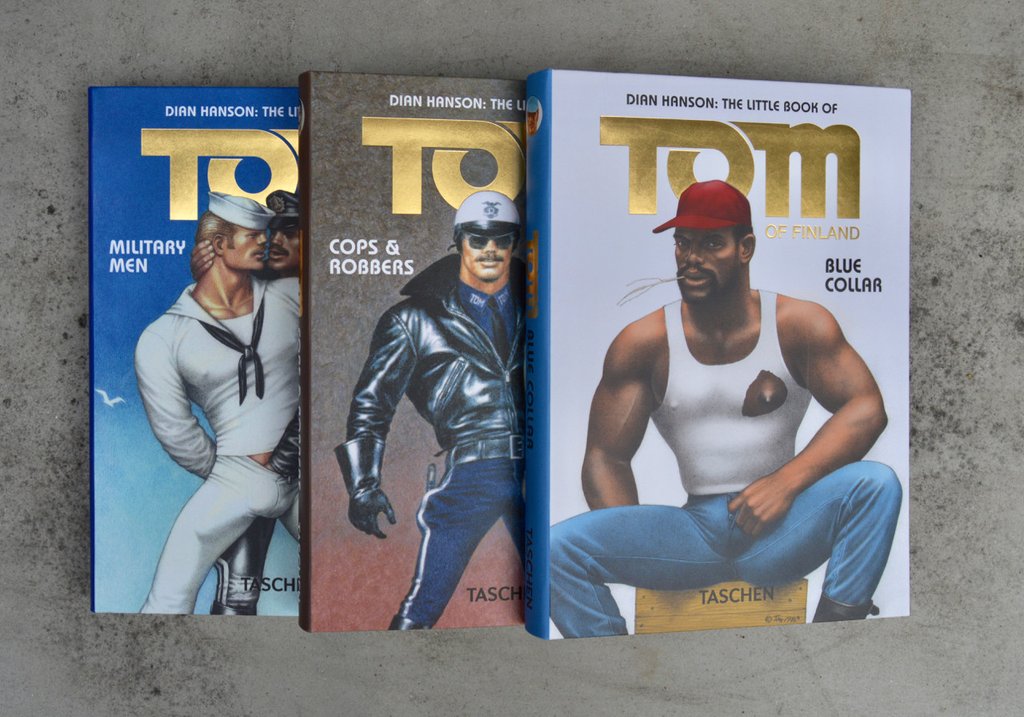How did you first come across Tom’s work?
Been so long I can’t remember. I’ve been aware of it at least since the late 1970s, when I began working in porn in NY. During the great active days of the sexual revolution we idealistically assumed all were bisexual, and therefore I and many others consumed straight and gay sexual materials.
That sounds like such an exciting time. Can you tell me more about those years?
I started at a hardcore magazine titled Puritan in 1976, and moved to NY to work on this magazine. In 1978 I left to work with my mentor Peter Wolff on a magazine titled Partner. At that time there were many sex clubs in the city and since Partner was a “true sex” magazine, where we reported on sexual trends around the country, we had free access to all clubs. Each night of the week represented a peak night at a different club, some straight sex, some mixed gay and straight, some S/M. For women to refuse sex with other women at these clubs was a social gaff, thus we all were fluid in that way. It was touchier between men at the swing clubs, but one might still suddenly realize that the reason one’s sex partner looked familiar was because you’d seen him buying and drinking men’s urine outside a restroom at an S/M club three nights before. The Hellfire Club became the ultimate, where all bathroom walls were eliminated and elimination was shared freely. Fisting was a performance art practiced by both men and women, on men. Blood flowed on occasion. This was all shut down in the early ’80s after HIV was identified as a sexually transmitted virus.
Wow, so your expertise is both intellectual and experiential. I think this really comes across in your books. Regarding Tom, how have you approached editing books about him and his work?
The same as with any other book: hunt down and acquire all known works; organize and categorize, by year of creation and subject matter. Study the resulting categories to track growth and change, and then relate that to the society as a whole. Get the best reproducible scans (often the most grueling part) and find quality writers who can educate the potential readers as well as entertain on the subject. Find a designer with talent, who also likes the work (this part is not so hard, as most appreciate Tom’s work once exposed to a good selection) and then work with that designer every step of the way to keep the project on track. And, of course, liaison with Durk Dehner (President of Tom of Finland Foundation) on all the details.

The books you’ve edited on Tom are each unique - some are brief, others extensive, others are more visually oriented. Are there any aspects that you try to include in every book, regardless of the focus or direction?
Always the best examples of his work, across the decades, taken from the best source materials. I can’t stand to see poor scans, out of focus images, just because that’s all there was available. If Tom is to be accepted as a top artistic talent his work must be presented with the same quality and attention to detail as David Hockney’s or Jeff Koons’.
I completely agree! Besides finding good quality source materials, what are some of the challenges of editing books about Tom’s work?
The challenges are not as great as before I created Tom of Finland XXL, because for that book I had to do the rigorous work of tracking down all known images from around the world. That took four years, but now we have the scans of all these works, so new books can be created from that archived material. The major challenge today is creating books that attract younger readers, to interest them in gay history and the part Tom played in the gay rights struggle, that too many young people think is over.
It’s interesting you say that because I feel we live in a time - particularly with Gen Zers - where gay rights are taken for granted and there’s less engagement with the political or radical side of gay sexuality. Have you managed to identify a strategy to attract young readers to gay history and Tom’s work?
I can’t say I have any tactic besides shoving his beautiful art under their noses. Because he had true talent it comes through to every viewer, and young men like to have something on the coffee table that shows their taste and artistic discernment as much as older men. I do recall taking a young intern and his equally young friend to visit the Tom House and Sharp (Vice President of Tom of Finland Foundation) talking to them about how a man can only take gay insults so long before he’s radicalized and they tilted their heads like curious dogs. Later, my intern said he’d never been the target of a gay slur in his life! Hearing about it made him do some research, though, and learn a little history.


On that same topic, what do you think of the state of gay sexuality today?
I really love Millennial men, especially the ones below 30. They’re so much more comfortable with their sexuality, understanding that gay and straight are equally acceptable identities. I’m really surprised when I encounter a man in this age group who seems closeted, whereas in my youth they were everywhere, to their disadvantage and that of the women they dated and even married. The more people know they’re gay early, and happily embrace it, the better for all of us.
At this point, you’re basically a Tom expert. Are there any facets about the artist or his work that still surprise you?
Mainly that with between 4000 and 5000 completed works and sketches known to exist there are still new works that surface. I ran into a collection two years ago of 10 images I’d never seen. We have to remember that most of Tom’s works from the 1950s were lost. So few were documented in any way that this is really a great unknown, and as the possible owners of these works are now very old or dead this may forever remain a great unknown.

Can you tell me about those 10 images you happened to come across?
They were commissioned works from the late ’50s / early ’60s on the subject of switching - whipping with a bundle of twigs - of which I’d only seen one previous drawing. Since Tom never did anything else on the subject it always stood out. Seeing the rest of the series put it in context at last. Tom made simple fliers in that period offering his commission services at very reasonable prices, and these were passed around among friends in the European gay community.
If there’s one thing your readers could take away from your books on Tom, what would that be?
An appreciation that Tom’s art both embraces and transcends pornography, that fine art can also be jerk-worthy.
What are you working on next?
I’m working on multiple books for TASCHEN, but also on a personal project on Hollywood Hustlers, from the 1970s through the 90s, including their fashion, with audio accompaniment.

